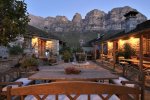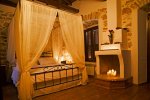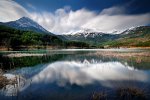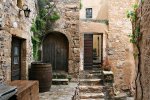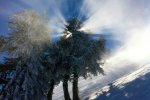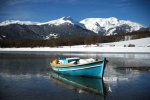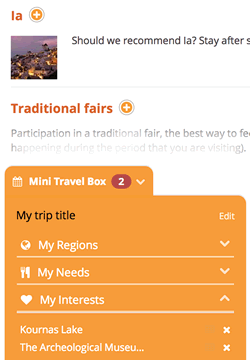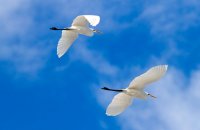
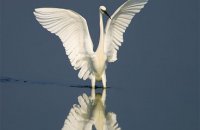
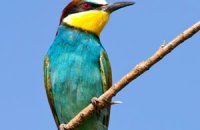
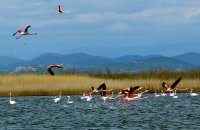
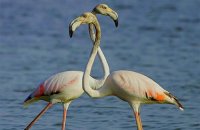
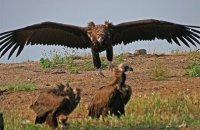
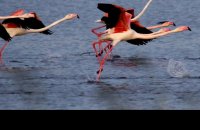
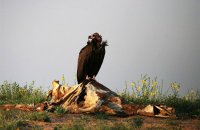
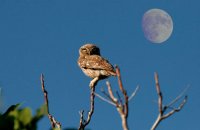
Whoosh! You won’t hear it, but you’ll see it on the distant horizon as an egret takes off from the waters of the lagoon, passing through the field of view of your binoculars.
Bird watching, or ‘birding’ has fanatical adherents around the globe, and even in America it comes in second as a favorite hobby, while in other countries the locating (i.e. spotting) of rare birds, or ‘twitching’ according to the British term, flourishes.
Who doesn’t remember enthusiastically the arrival of the swallows, the sight of an eagle high in the sky, or hearing amongst the naked branches of the trees the sweet song of the robin?
Spring has arrived, and the land looks like Grand Central for the travelers of the skies. Thousands of birds return either to spend their summer, or for a few days stopover on their way to the northern countries. It is an ideal time for bird watching, as is the autumn migration period also. According to experienced observers, the perfect time for observation is early in the morning when the birds are most active.
The first stage in birdwatching is simple observation with the "naked eye." However, to experience properly the magic of birdwatching, you will need binoculars and a tripod, so you can appreciate the avian life without their noticing you. A necessary feature of a good birdwatcher is patience, because you never know when nor what the bird under observation has in mind. Obviously the distance is great between this stage and the professional scientific research of ornithologists, but already from early experiences in birdwatching you will realize the benefit of the pursuit.
If you wish to start birdwatching tomorrow and you find yourself in the city center, in Plaka of late you will see a bunch of green parrots. However, because birdwatching is such a refreshing and relaxing pastime, ideally you ought to combine it with a visit to one of the several wetlands around the country.
In Attica Prefecture, the National Park of Shinia is a good place to start, since just a short distance from the city you can see carefree ducks, herons arriving from their long journey, northern wheatear (Oenanthe oenan), storks and many, many more. And if you are persistent in your visits you can see eagles or even swans, but more rarely.
One of the most important wetlands in southern Europe is the Lagoon of Messolonghi, where throughout the year you will encounter the magical world of birds, and many species have opted for permanent residence, such as Egrets. In the dunes of the lagoon nest oystercatchers (Haematopus ostralogus), the Kentish plover (Charadrius alsxandrinus ) and Redshank (Tringa totanus). Amongst the glasswort, or sea-asparagus, the water-swallow and the black-winged Stilt (Himantopus himantopus) construct their nests, while in the salt marshes, stabbing the waters, the avocets make their presence known. The Glossy Ibis (Plegadus falcinelllus), coots, and wild ducks pass by, as well as swans and flamingos that color the water a brilliant pink with their reflections.
(Local Bird watching Guide Mr. Nikos Noulas, (+30) 69366158 42)
Further north, in a distinct location with ideal conditions for birdwatching, is Lake Kerkini, whose incomparably beautiful natural environment is the habitat of many wild animals and birds. More than 300 bird species, of which 140 are permanent residents. Among their number silver Pelicans, storks, Isabelline wheatear, ducks and a great population of herons. (Lake Kerkini Information Center: (+30) 23270 28004, www.kerkini.gr)
Another paradise for birdwatchers, as well as for the birds it hosts, is the Evros river delta. Here in fact, the observation begins as soon as you reach the area, since the whole area is a wetland important not only for Greece but also Europe, protected by the Ramsar treaty. Your binoculars will capture many species of ducks, black-headed bunting (Emberiza melanocephala) and even eagles, while you float about on the calm waters of the delta accompanied by guides experienced in the area. (Evros Delta Information Center: (+30) 25510 61000, www.evros-delta.gr)
Nearby is the Forest of Dadia, where you will see apart from others many kinds of predators that are either permanent residents or passersby. Choose your observation point and see through your lens from vultures (Kartalia, as the locals call them) and eagles, to woodpeckers and the colorful Eurasian bee-eater Merops apiaster!
Naturally, the options include island-country, since apart from the ubiquitous common seagull, the islands are home to many other species of birds, sometimes endangered ones.
One of the most ideal islands for birdwatching is Limnos, for example, where undisturbed by sudden interference you can enjoy nature’s quiet, but also its liveliness. Often you will see partridges on gravel roads of the island while you will encounter flamingos, egrets and other migratory birds in the coastal lakes Hortaro and Alyki.
The list is long and can include many more areas: estuaries, lakes, forests. So wherever your next outing in nature takes you, take some time to observe the feathered co-inhabitants of our planet, and admire the exhibition of life in this very special way.
However, do keep in mind that visiting the wetlands during migration requires special care, as migratory birds have come a long way and have limited energy reserves vital for them. Avoid disturbing birds, and if you encounter an exhausted one that needs assistance please contact one of the shelters of the Ornithological Society.
Alkyoni (Halcyon), Association for the Care & Wildlife on Paros: (+30) 6944 741 616
Anima, Association for the Protection and Welfare of Wildlife: (+30) 6972 6646 75
HWH, Hellenic Centre for the Care of Wildlife on Aegina:(+30) 6973 318 845
Hellenic Ornithological Society, Athens Office: (+30) 210 8228704, 8227937

